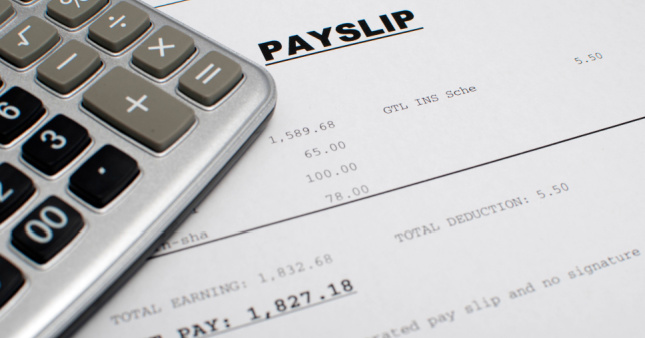
Final pay is monies owed to an employee whose employment has come to an end.
Final pay includes the payment of outstanding wages, any accrued entitlements such as annual leave and annual leave loading if applicable, and possibly other payments such as long service leave, payment in lieu of notice, and redundancy pay.
Most awards require you to give a departing employee their final pay within 7 days of their employment ending. Some awards and registered agreements may provide a longer timeframe. Others provide for a shorter timeframe.
Final Pay Payments
Final pay is what an employer owes an employee when their employment ends. An award, employment contract, enterprise agreement or other registered agreement can specify when final pay must be paid. If it does not, the best practice is for an employee to be paid within 7 days of their employment ending or as per the next scheduled pay cycle.
Call For Workplace Advice Now
Call Our Team of Advisers Who Will Help You with Your Workplace Questions.
Calculating Final Pay
An employee should get the following entitlements in their final pay:
outstanding wages for hours they have worked, including penalty rates and allowances
any accumulated annual leave, including annual leave loading if it would have been paid during employment
and, if applicable:
accrued or pro rata long service leave – depending on the relevant state or territory legislation;
payment in lieu of notice – if the employee is not working the notice period.
redundancy pay.
Sick or carer’s leave is generally not paid out when employment ends, unless an award, contract or registered agreement says otherwise.
Check Award And Pay Rate
On termination an employee should be paid any outstanding wages for hours they have worked, including penalty rates and allowances
Make sure you know what Award applies to your employee and what classification they fall under, as this will provide the minimum rate of pay for that employee, though a registered agreement or employment contract may provide a higher base rate of pay. Some final payments of entitlements are at the base rate of pay (see below), whilst others are at the employee’s ordinary pay which is what they are usually paid for the hours they work, depending on the award, agreement or contract Most awards have a provision that sets-out what needs to be paid on termination, whether payment is at the base rate of pay or not, and when final payment needs to be made.

Thinking of Dismissing an Employee?
Employee performance and termination should be handled carefully, download our free e-guide to find out more.
Check Annual Leave Entitlements on Termination
When an employee ceases employment, you must include all unused annual leave as part of their final pay. An employee must be paid at least their base rate of pay for the hours they ordinarily would have worked during a period of annual leave up to 38 hours a week, unless their award, registered agreement or contract provides a greater entitlement.
However, the base rate of pay generally does not include payments such as:
penalties
allowances
bonuses
Some awards, however, may require the ordinary rate to be paid out instead of the base rate. To be certain of the exact requirements for cashing out annual leave for an employee, it is crucial to refer to the criteria stated in the respective award.
It is important to note that the NES specifies that annual leave entitlements cannot be cashed out unless an award, registered agreement or contract permits it. The Fair Work Act 2009 states that if an employee is terminated and they have a period of untaken annual leave, they must be paid out what they would have been paid had they taken that period of annual leave.
This means that if the employee was entitled to payment of annual leave loading as a result of their award or enterprise agreement or contract, then they will be entitled to payment of the applicable annual leave loading over the unused leave.
However, some employees may receive an annual salary or an all-inclusive hourly rate that incorporates annual leave loading, in which case it does not need to be paid separately. Whether annual leave loading is included in the salary amount or forms part of an hourly rate will usually be stated in the employment contract.
Check If Sick Leave Needs To Be Paid
In most cases, you do not have to give a departing employee a sick leave payout. There are, however, some exceptions to this rule.
An employee may be entitled to cash out sick leave during their employment if indicated in their award or registered agreement and if certain conditions are met:
an agreement is made in writing for the leave to be cashed out
the employee has at least 15 days of unused paid sick or carer’s leave left after cashing out
employee is paid the full amount they would have been paid if they actually took the leave
You are not required to cash out sick and carer’s leave if the employee does not meet the criteria above. There are, however, exceptions to this depending on the employee’s awards. Certain modern awards have specific provisions that may not fall within the conditions bulleted above.
Long Service Leave
Employees may be entitled to long service leave as a result of their applicable modern award or registered agreement, though generally the entitlement to long service leave is derived from the relevant state or territory long service leave legislation.
These laws set out:
how long an employee has to be employed in the business before they can get long service leave;
how much long service leave (if any) is paid to the employee on termination;
how the amount of long service leave and the rate it is paid at is calculated.
We can help you understand if long service leave applies to your employees. Call us for free initial advice on 1300 651 415.
Notice and Redundancy
Notice of termination and redundancy pay form part of the National Employment Standards (NES) contained in the Fair Work Act 2009 which provide the minimum terms and conditions of employment for national system employees.
Notice
Whether an employee quits or is fired, notice is generally required. A notice period is the length of time that an employee or employer has to give to end employment. Notice periods apply to employers and employees and are set out in their award, any enterprise agreement, contract of employment or workplace policy, however the NES provides minimum notice periods when dismissing an employee.
The minimum notice period an employer has to give an employee is based on the employee’s continuous service ie the length of time they have been employed by the business. The service period does not include any periods of unauthorised leave or absences but does include authorised unpaid leave (eg. unpaid parental leave).
| Period of continuous service | Minimum notice period |
| 1 year or less | 1 week |
| More than 1 year – 3 years | 2 weeks |
| More than 3 years – 5 years | 3 weeks |
| More than 5 years | 4 weeks |
Employees over 45 years old who have worked for the employer for at least 2 years get an extra week of notice.
Notice periods do not apply to employees who:
are casual
are employed for a specific period of time or task (eg a fixed term contract) and that period or task is ending at the prescribed time
do seasonal work
are fired because of evidence of serious misconduct ( ie engaging in wilful and deliberate conduct inconsistent with their continued employment, for example in theft, fraud or assault)
have a training arrangement and are employed for a set period of time, or for the length of the training arrangement (other than an apprentice) and the employment relationship is ending at the conclusion of the agreed period / training agreement.
are daily hire employees working in the building and construction, or meat industry
are weekly hire employees working in connection with the meat industry and whose termination depends on seasonal factors.
Once an employee has resigned with notice or has been given notice of their employment ending, the notice period will run from the day after it is given to the day the employment ends. You may choose to either:
let the employee work out the notice period, or
tell the employee to leave early and pay them in lieu of notice instead
If the employer pays out the notice period, the employee’s employment ends on the date that payment in lieu of notice is made. In that case, the employee doesn’t stay employed during the notice period (or continue to accrue entitlements, such as annual leave). If the employer doesn’t pay out any part of the notice period, the employee stays employed for the entire notice period. Employment can’t end on a date earlier than the day the notice is given.
When you calculate pay in lieu of notice, you should pay the employee what they would have been paid if they had been at work. Be sure to include the following items as part of their final pay:
overtime worked
long service (if applicable)
loadings i.e. leave loading
monetary allowances
incentive-based payments and bonuses
any other separate identifiable amounts
Deductions
An employee’s award, employment contract, enterprise agreement or other registered agreement sets out:
how much notice (if any) the employee has to give when they resign
when an employer can withhold money if the employee does not give the minimum notice period required
Taking money out of an employee’s pay before it is paid to them is called a deduction.
An employer can only deduct money if:
the employee agrees in writing and it’s principally for their benefit
it’s allowed by a law, a court order, or by the Fair Work Commission, or
it’s allowed under the employee’s award, or
it’s allowed under the employee’s registered agreement and the employee agrees to it.
Most awards say that in certain circumstances an employer can deduct up to one week’s wages from an employee’s pay if they do not provide the minimum amount of notice. Where an award allows this, an employer can only deduct pay from an employee’s wages under the award, not from other entitlements.
Even if the deduction is made in accordance with an award, registered agreement or contract, an employer can’t deduct if:
it benefits the employer, not the employee, and the deduction would be unreasonable in the circumstances, or
the employee is under 18 years of age and their parent or guardian hasn’t agreed in writing.
Redundancy
Redundancy is when an employer dismisses an employee because:
The employer doesn’t need the employee’s job to be done by anyone any more, or
The employer becomes insolvent or bankrupt.
If an employee is made redundant, they should be given the minimum notice period for their length of service as set out in the NES or a longer period if provided in their award, registered agreement or employment contract. The employee can either work the notice period or to be paid the notice in lieu if the employer prefers them not to work the notice period.
The notice period will run from the day after it is given to the day the employment ends. If the employer pays out the notice period, the employee’s employment ends on the date that payment in lieu of notice is made. If the employer doesn’t pay out any part of the notice period, the employee stays employed for the entire notice period.
Employees should be paid any outstanding wages, unused annual leave, annual leave loading if applicable and they may be entitled to long service leave depending on their length of service and the circumstances under which their employments has ended.
In addition, an employee may also be entitled to redundancy or severance pay, depending on the circumstances, which may include:
the length of service of the employee;
the employee’s employment type (eg. casual)
whether employees are trainees or apprentices
whether they are employed for a specific time or purpose;
how many employees the employer has at the time of the dismissal; and
the applicable award, registered agreement or employment contract provisions.
If an employee is entitled to redundancy pay, the amount is determined by the length of the employee’s continuous period of service with their employer. Redundancy pay is paid at the employee’s base pay rate for ordinary hours worked.
| Period of continuous service | Redundancy pay |
| At least 1 year but less than 2 years | 4 weeks |
| At least 2 years but less than 3 years | 6 weeks |
| At least 3 years but less than 4 years | 7 weeks |
| At least 4 years but less than 5 years | 8 weeks |
| At least 5 years but less than 6 years | 10 weeks |
| At least 6 years but less than 7 years | 11 weeks |
| At least 7 years but less than 8 years | 13 weeks |
| At least 8 years but less than 9 years | 14 weeks |
| At least 9 years but less than 10 years | 16 weeks |
| At least 10 years | 12 weeks |
We can help you better understand final pay for your departing employees. Call us now for free initial advice on 1300 651 415
Get Workplace Advice Now
Call Our Team of Advisers Who Will Help You with Your Workplace Questions.
Frequently Asked Questions
How Much Notice Does an Employee Have to Give When Resigning?
When an employee resigns, they may be required to give notice. The amount of notice they are required to give (if at all) should be stated in their award, registered agreement, or employment contract. Casual employees are not required to give notice.
Can An Employer Withhold Final Pay?
An employee must be paid any outstanding wages and entitlements on termination. However, in limited circumstances employers may not have to pay notice, long service leave or redundancy pay and may be able to deduct up to one week’s wages from an employee’s pay. We can help you better understand if this applies to your business. Call us for free initial advice on 1300 651 415.
When Does Final Pay Have To Be Paid?
An award, employment contract, enterprise agreement or other registered agreement can specify when final pay must be paid. If it does not, the best practice is for an employee to be paid within 7 days of their employment ending or as per the next scheduled pay cycle.
How Long Does An Employer Have To Pay Out Final Pay?
An award, employment contract, enterprise agreement or other registered agreement can specify when final pay must be paid. If it does not, the best practice is for an employee to be paid within 7 days of their employment ending or as per the next scheduled pay cycle.
Also note that State and Territory long service leave laws or long service leave entitlements under section 113 of the Fair Work Act may require an employer to pay an employee for accrued long service leave on the day on which the employee’s employment terminates or shortly after.
Does Sick Leave Get Paid Out In Redundancy?
Sick leave is not paid out on termination of employment unless an award, registered agreement or contract says otherwise.
Is An Employer Required To Provide A Separation Certificate?
Yes, if requested by the former employee or Services Australia. Services Australia (Centrelink) sometimes requires employers to complete an Employment Separation Certificate when an employee stops working for them. This certificate helps Centrelink pay former employees the right amount from the right date and requires employers to provide information as to why the employment has been terminated and when. The employer needs to provide the certificate within 14 days of the request.



